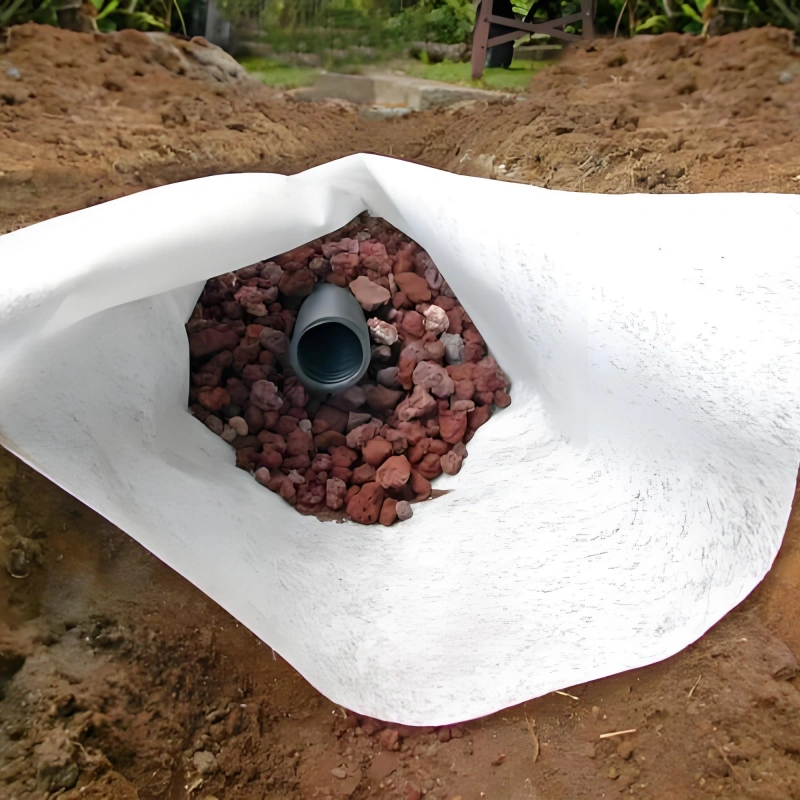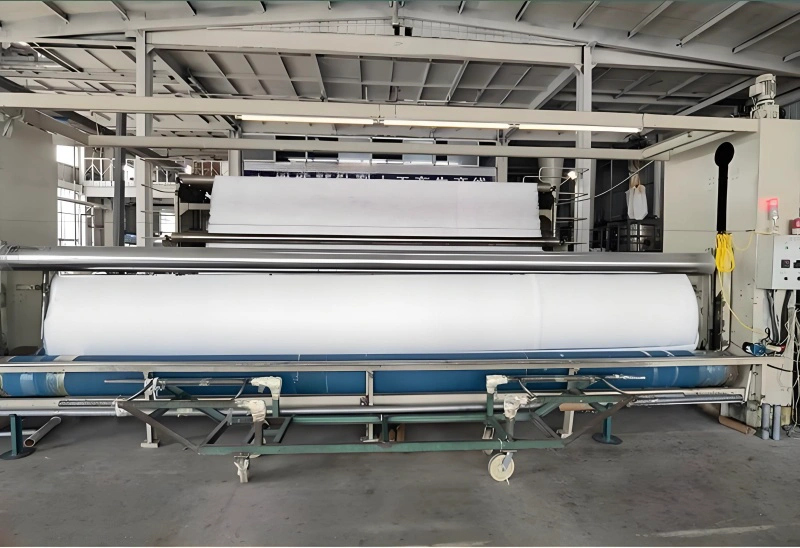Geotextiles are widely used in construction, civil engineering, and environmental protection projects. These materials help with soil stabilization, erosion control, drainage, and reinforcement in various applications. In Malaysia, geotextiles are in high demand, and the prices vary based on material type, specifications, and usage. This article will explore the different types of geotextiles, their specifications, features, applications, and their prices in the Malaysian market.

Types of Geotextiles
Geotextiles come in several forms, each offering unique features suited to different applications. The five main types of geotextiles are:
Filament Woven Geotextile
Flat Yarn Woven Geotextile
Filament Nonwoven Geotextile
Staple Fiber Non-woven Geotextile
Needle Punched Nonwoven Geotextile
1. Filament Woven Geotextile
Filament woven geotextiles are made from continuous filaments woven together to form a strong, durable fabric. They are highly resistant to tension and wear, making them ideal for reinforcement and separation applications in road construction and embankments.
Specifications Table
| Specification | Details |
|---|---|
| Material | High-strength polyester or polypropylene |
| Weight | 150 - 600 g/m² |
| Tensile Strength | 20 - 100 kN/m |
| Elongation at Break | 15 - 30% |
| Width | 2 - 6 meters |
| Roll Length | 50 - 100 meters |
Features and Applications
Features: High tensile strength, durability, UV resistance.
Applications: Road reinforcement, embankment stabilization, and soil separation.
Price
Factory Price: $1.50 - $2.50 per square meter
Wholesale Price (Malaysia): $2.00 - $3.00 per square meter
2. Flat Yarn Woven Geotextile
Flat yarn woven geotextiles are created using flat tapes of polypropylene woven into a durable fabric. These geotextiles are primarily used for filtration and separation in drainage systems, as well as in landscaping and erosion control projects.
Specifications Table
| Specification | Details |
|---|---|
| Material | Polypropylene |
| Weight | 100 - 400 g/m² |
| Tensile Strength | 15 - 60 kN/m |
| Elongation at Break | 10 - 25% |
| Width | 1.5 - 5 meters |
| Roll Length | 50 - 100 meters |
Features and Applications
Features: Lightweight, cost-effective, excellent filtration properties.
Applications: Drainage, soil separation, filtration in road and railway construction.
Price
Factory Price: $0.80 - $1.50 per square meter
Wholesale Price (Malaysia): $1.00 - $2.00 per square meter
3. Filament Nonwoven Geotextile
Filament nonwoven geotextiles are manufactured from continuous polyester or polypropylene filaments bonded together using a thermal or mechanical process. These geotextiles offer excellent filtration, drainage, and protection, making them suitable for retaining walls, drainage systems, and landfills.
Specifications Table
| Specification | Details |
|---|---|
| Material | Polyester or Polypropylene |
| Weight | 100 - 800 g/m² |
| Tensile Strength | 10 - 90 kN/m |
| Elongation at Break | 20 - 50% |
| Width | 1 - 6 meters |
| Roll Length | 50 - 100 meters |
Features and Applications
Features: High filtration efficiency, good drainage, UV resistance.
Applications: Landfills, drainage systems, erosion control, waterproofing layers.
Price
Factory Price: $1.50 - $3.50 per square meter
Wholesale Price (Malaysia): $2.00 - $4.00 per square meter
4. Staple Fiber Non-woven Geotextile
Staple fiber non-woven geotextiles are made from short, discrete fibers mechanically entangled to form a fabric. These geotextiles are highly versatile and can be used in drainage, filtration, separation, and protection applications.
Specifications Table
| Specification | Details |
|---|---|
| Material | Polyester or Polypropylene |
| Weight | 150 - 700 g/m² |
| Tensile Strength | 8 - 60 kN/m |
| Elongation at Break | 25 - 50% |
| Width | 1 - 6 meters |
| Roll Length | 50 - 200 meters |
Features and Applications
Features: Excellent filtration, high puncture resistance, flexibility.
Applications: Drainage, soil separation, filtration, environmental protection.
Price
Factory Price: $1.00 - $2.50 per square meter
Wholesale Price (Malaysia): $1.50 - $3.00 per square meter
5. Needle Punched Nonwoven Geotextile
Needle punched nonwoven geotextiles are produced by mechanically interlocking fibers using a needle-punching process. This type of geotextile is known for its high strength and durability, making it suitable for applications that require soil reinforcement, drainage, and filtration.
Specifications Table
| Specification | Details |
|---|---|
| Material | Polyester or Polypropylene |
| Weight | 200 - 1000 g/m² |
| Tensile Strength | 10 - 80 kN/m |
| Elongation at Break | 20 - 45% |
| Width | 1 - 6 meters |
| Roll Length | 50 - 100 meters |
Features and Applications
Features: High tensile strength, excellent puncture resistance, durable in harsh environments.
Applications: Road and railway construction, slope stabilization, landfills, erosion control.
Price
Factory Price: $1.50 - $3.00 per square meter
Wholesale Price (Malaysia): $2.00 - $3.50 per square meter
Summary of Geotextile Prices in Malaysia
| Geotextile Type | Factory Price (USD) | Wholesale Price (USD) |
|---|---|---|
| Filament Woven Geotextile | $1.50 - $2.50 | $2.00 - $3.00 |
| Flat Yarn Woven Geotextile | $0.80 - $1.50 | $1.00 - $2.00 |
| Filament Nonwoven Geotextile | $1.50 - $3.50 | $2.00 - $4.00 |
| Staple Fiber Non-woven Geotextile | $1.00 - $2.50 | $1.50 - $3.00 |
| Needle Punched Nonwoven Geotextile | $1.50 - $3.00 | $2.00 - $3.50 |
Factors affecting Geotextile price in Malaysia
Here are the key factors that affect Geotextile prices in Malaysia:
Material Type: The type of material used, such as polyester or polypropylene, significantly impacts the cost. Woven geotextiles are generally more expensive than nonwoven types due to their strength and durability.
Tensile Strength: Geotextiles with higher tensile strength and durability typically command higher prices as they are suitable for more demanding applications.
Weight (GSM): Heavier geotextiles (with higher GSM) cost more because they provide greater protection and durability for large-scale projects like road construction.
Production Process: Manufacturing techniques, such as needle punching or weaving, influence costs. More complex processes lead to higher prices due to increased labor and production time.
Roll Size and Dimensions: Larger rolls with wider widths may cost more upfront, but they can reduce installation time and waste, affecting the total cost of a project.
Application: Prices can vary depending on the specific use of the geotextile, such as filtration, drainage, or reinforcement, which may require different performance standards.
Market Demand: Prices fluctuate based on supply and demand, particularly in growing industries like construction and environmental engineering.
Import and Tariff Costs: Import duties and tariffs on raw materials or finished geotextiles can influence the final price in Malaysia.
Supplier and Manufacturer: Different suppliers or manufacturers may offer varying prices based on their production capacity, reputation, and geographic location. Bulk orders from manufacturers generally result in lower prices.
Logistics and Shipping Costs: Transportation and shipping costs, especially for large, heavy rolls, will affect the final price, particularly for long-distance deliveries.
Conclusion
The price of geotextiles in Malaysia varies depending on the type, specifications, and intended application. For large infrastructure projects like road construction or drainage systems, filament woven geotextiles and needle punched nonwoven geotextiles provide the necessary strength and durability. For smaller projects requiring effective filtration and drainage, flat yarn woven geotextiles or staple fiber non-woven geotextiles may be more cost-effective.
When sourcing geotextiles in bulk, purchasing directly from geotextile manufacturers can result in lower prices, especially when compared to wholesale costs. Always ensure that the specifications match the project requirements to get the best performance and value from the geotextiles.


897.webp)
942.webp)
237.webp)